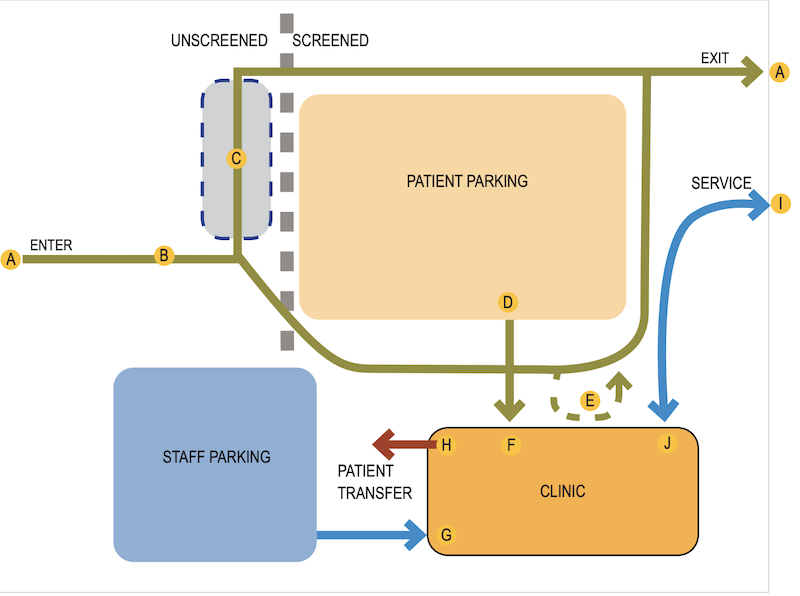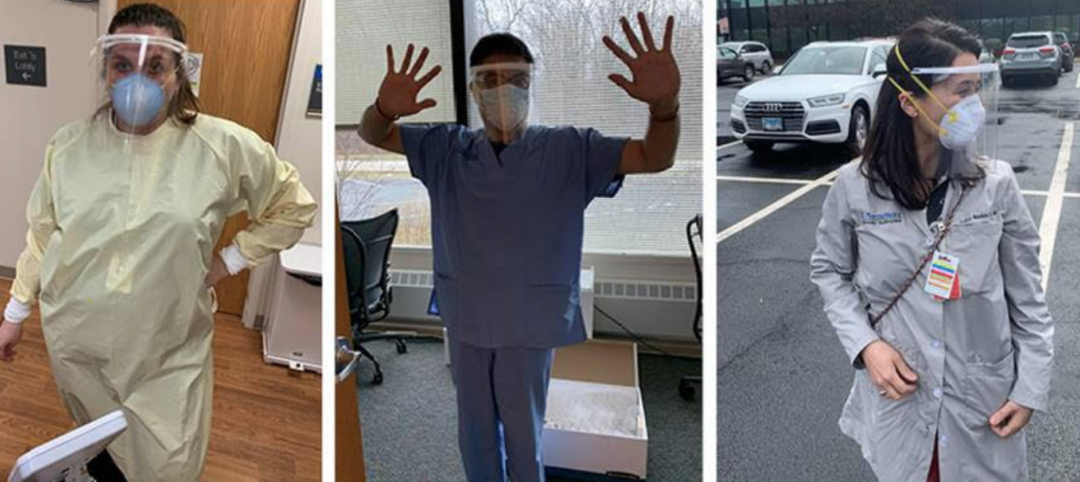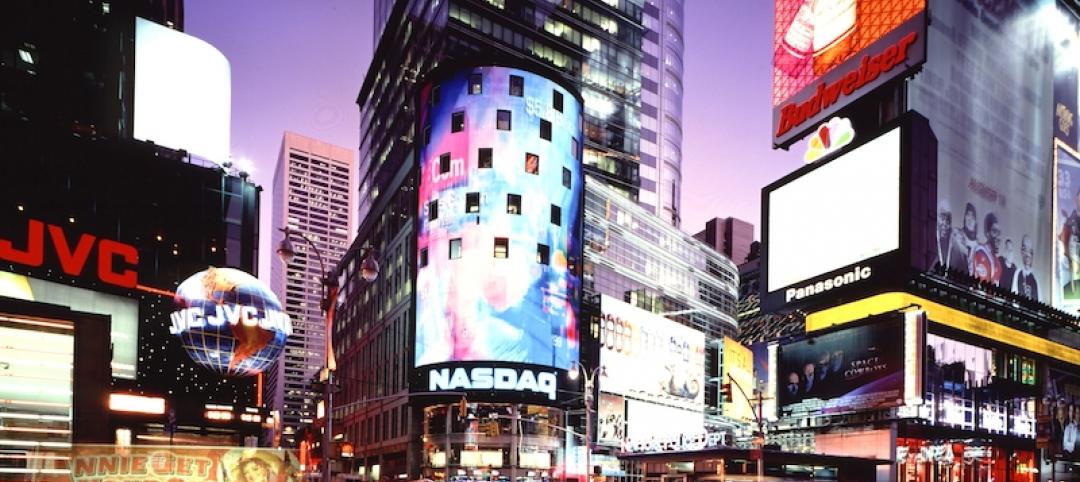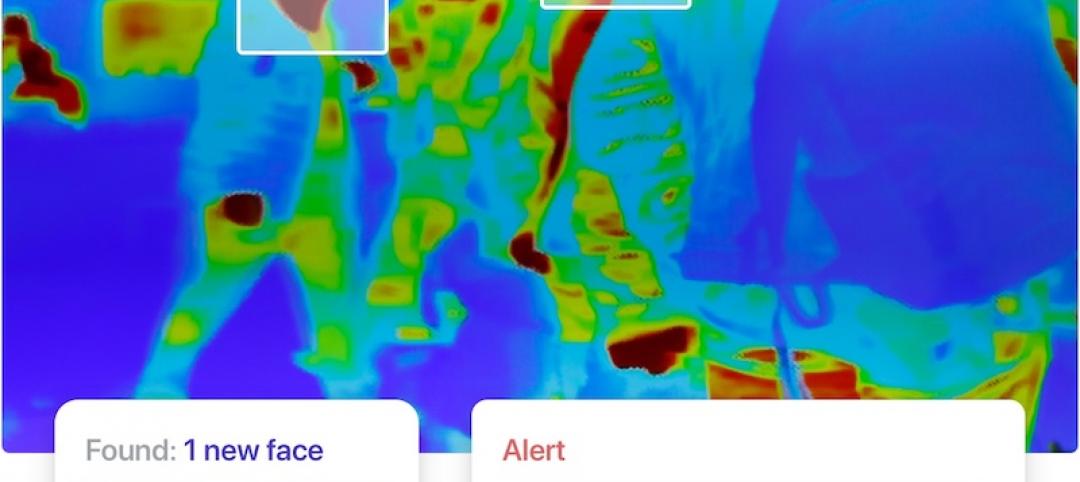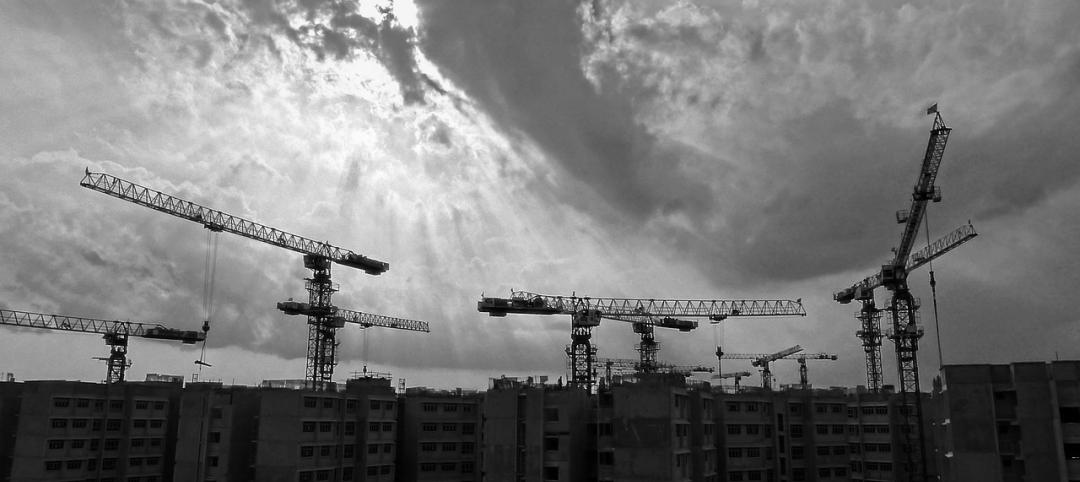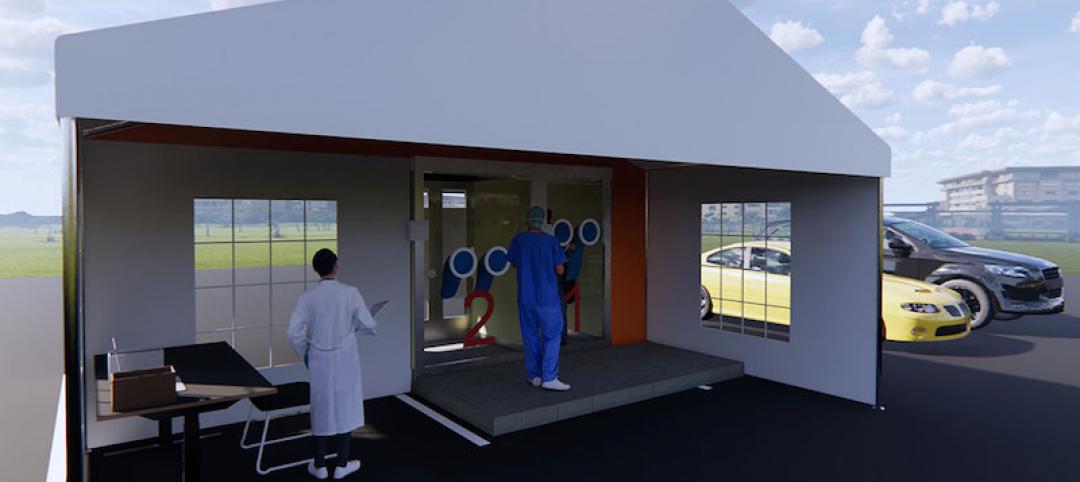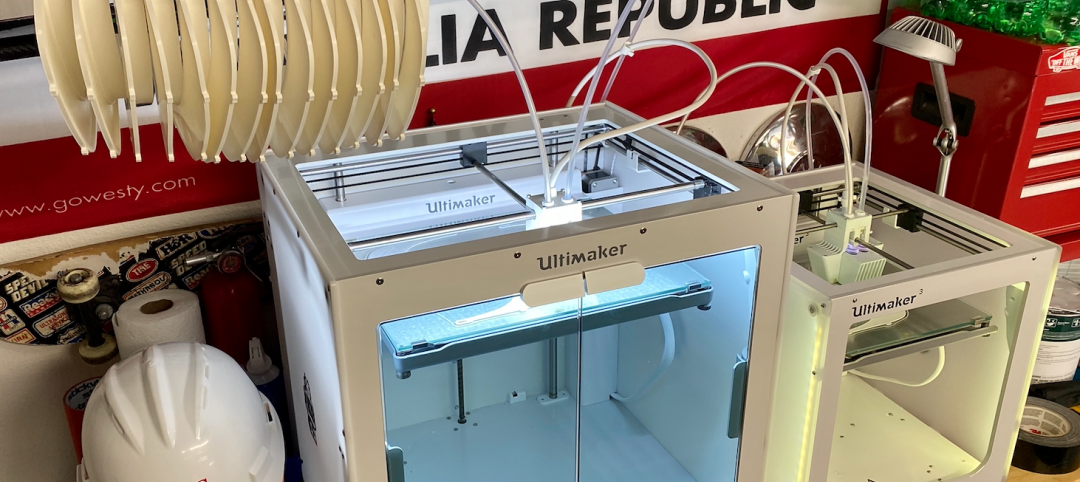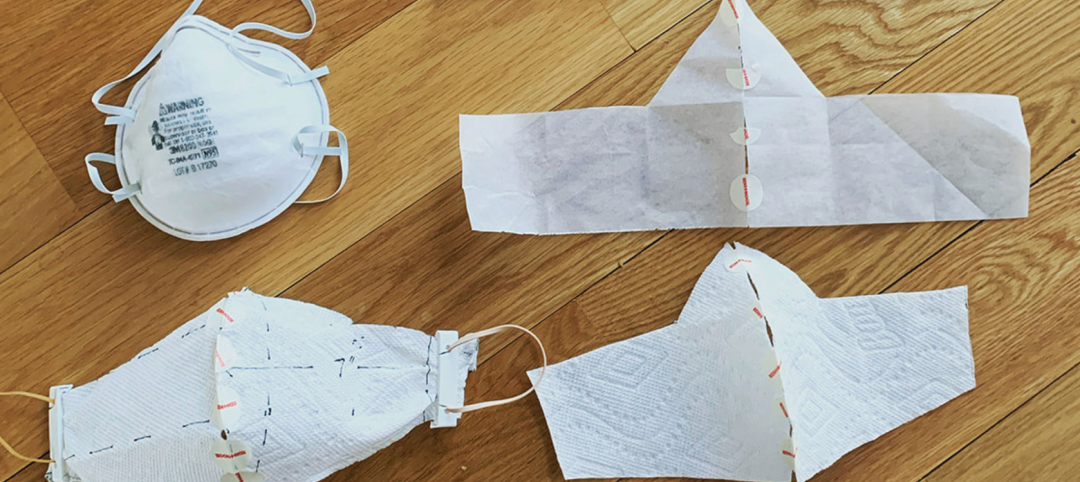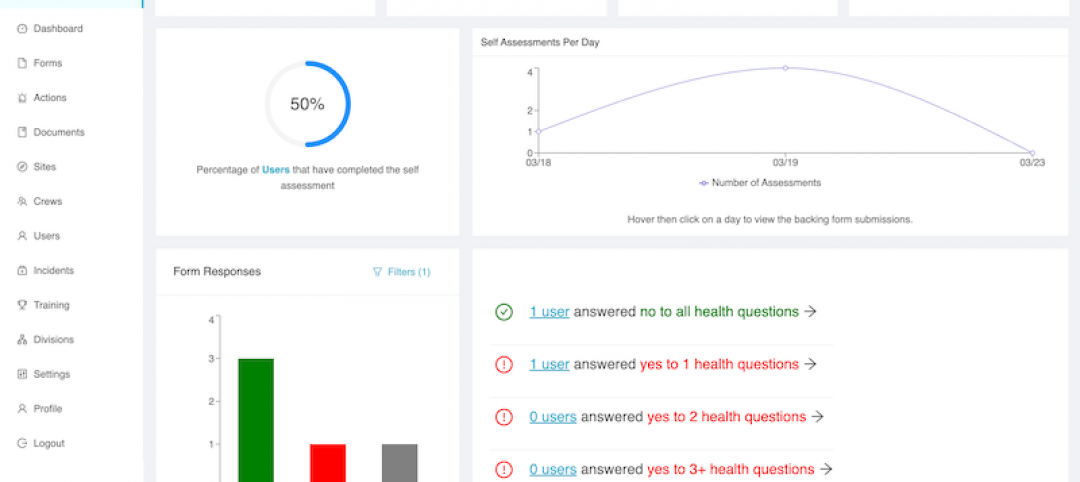Eppstein Uhen Architects (EUA) has released a 16-page guide that provides pandemic considerations for health facility design. The document focuses on four objectives:
1. Reducing patient presentations at facilities, with specific focuses on telehealth, site design and planning, and drive-through testing. For example, the guide’s considerations for reducing patient presentations include using the facility’s parking lot to manage who enters the building. It recommends a single point of entry and exit, a staffed gatehouse to direct and track patients (via smartphone technology), and drive-through services for pharmacies and labs.
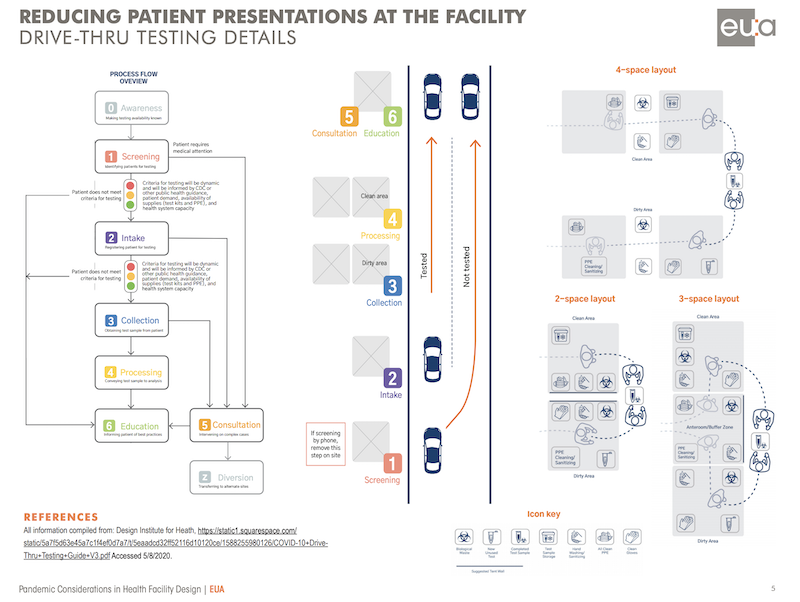 The guide emphasizes the importance of drive-through options for controlling who enters a healthcare building.
The guide emphasizes the importance of drive-through options for controlling who enters a healthcare building.
2. Isolating infectious patients, and how to prepare vestibules, entries, waiting rooms, and reception areas. The guide recommends larger vestibules to accommodate more functions and equipment, as well as temperature screening, physical distancing, and touchless entry supplemented by hand sanitizer stations and mask dispensers. Planning, the guide states, will also consider “placing a negative pressure multipurpose room adjacent to registration to isolate patients with symptoms of infectious diseases.
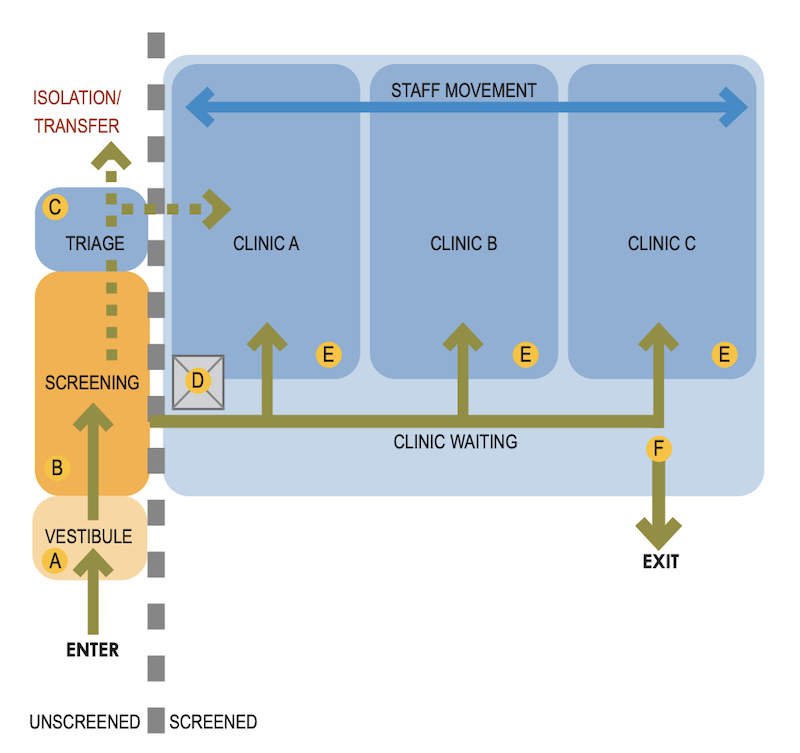 Screening patients as they enter a building is imperative.
Screening patients as they enter a building is imperative.
3. Improving facilities’ ability to reduce the spread of infection. The guide makes specific planning recommendations for clinics, hospital lobbies, emergency departments, elevators, materials management, and restrooms. Triage areas at the front door will help sort well and unwell patients. One-way patient flow will ensure patients don’t cross paths with potentially unwell patients who are entering the building.
For clinics, EUA favors a “library” model that includes community spaces (e.g., rooms for meetings and group therapies, physical therapy, or for staff break rooms) with access to the building’s main entrance. During a pandemic, a community space would be converted to serve as a buffer between screened and unscreened patients.
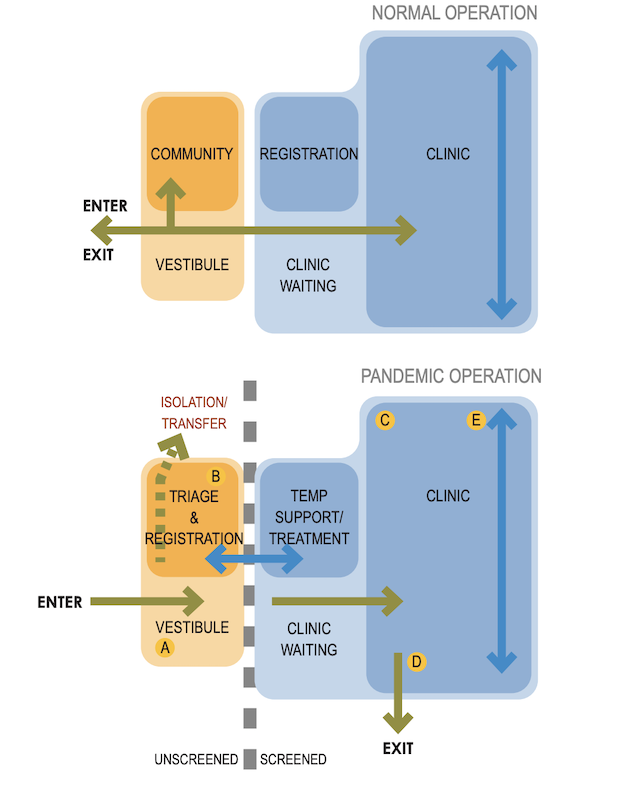 The guide recommends one-way traffic so that well and unwell patients don't intersect.
The guide recommends one-way traffic so that well and unwell patients don't intersect.
4. Providing surge capacity for high-volume episodes. The guide offers considerations for separating infected patients, providing separate entrances, ventilation (including providing a negative pressure relationship in the infectious side of the unit), and repurposing lower-acuity patient care spaces for increased patient beds.
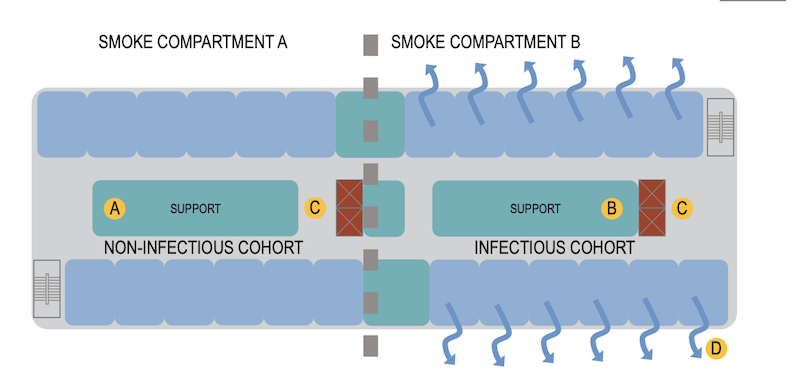 This diagram of an inpatient nursing unit shows how strategies can be employed to separate non-infectious and infectious patients in the same bed unit.
This diagram of an inpatient nursing unit shows how strategies can be employed to separate non-infectious and infectious patients in the same bed unit.
“Planning a building that seeks to fully address all aspects of operations during a pandemic is a major undertaking,” the guide concedes. Therefore, “it is important to be intentional about the decisions each organization makes around pandemic planning for each project.”
Related Stories
Coronavirus | Apr 4, 2020
COVID-19: Architecture firms churn out protective face shields using their 3D printers
Architecture firms from coast to coast have suddenly turned into manufacturing centers for the production of protective face shields and face masks for use by healthcare workers fighting the COVID-10 pandemic.
Coronavirus | Apr 3, 2020
Cities will survive the pandemic
Density may make it easier for the virus to spread, but let’s not forget that cities are in many ways the heart of society, and a springboard of big ideas, inventions, art, and culture.
Coronavirus | Apr 3, 2020
Kogniz Health launches AI-based fever detection cameras for crowds to help limit coronavirus spread
System continuously scans crowds for fever as they enter facilities to locate and isolate risks.
Coronavirus | Apr 3, 2020
27% of construction firms report layoffs amid COVID-19 outbreak, says AGC
The fast-worsening COVID-19 pandemic has triggered layoffs at more than a quarter of construction firms responding to an online survey released today by the Associated General Contractors of America. The finding, based on responses from earlier this week, contrasts with the government’s monthly employment report for March, which found that construction employment declined by 29,000 as of mid-March.
Coronavirus | Apr 3, 2020
Test facility in a box: Modular, walk-in booth design for coronavirus testing
To address the need for testing in urban areas for those without vehicles, CannonDesign architect Albert Rhee created a walk-in testing booth that is slated for public use.
Coronavirus | Apr 3, 2020
Survey of U.S. code officials shows trends in code compliance during COVID-19
The results of the survey tell us how jurisdictions throughout the U.S. are keeping up with inspections, new building permits and new construction.
Coronavirus | Apr 3, 2020
CallisonRTKL buoyed by overseas demand
Customer service across the globe remains No. 1 priority, says new CFO.
Coronavirus | Apr 2, 2020
COVID-19: HMC Architects using 3D Printers to make face shields for healthcare workers
HMC staff is producing 3D-printed parts from their homes as they self-isolate.
Coronavirus | Apr 2, 2020
COVID-19: CannonDesign initiates industry coalition to make masks for healthcare providers
Coalition formed to make DIY face masks for healthcare workers in COVID-19 settings.
Coronavirus | Apr 2, 2020
As virus spreads across North America, software providers step up with cost-free offerings
The goal is to keep construction projects moving forward at a time when jobs are being postponed or canceled.


